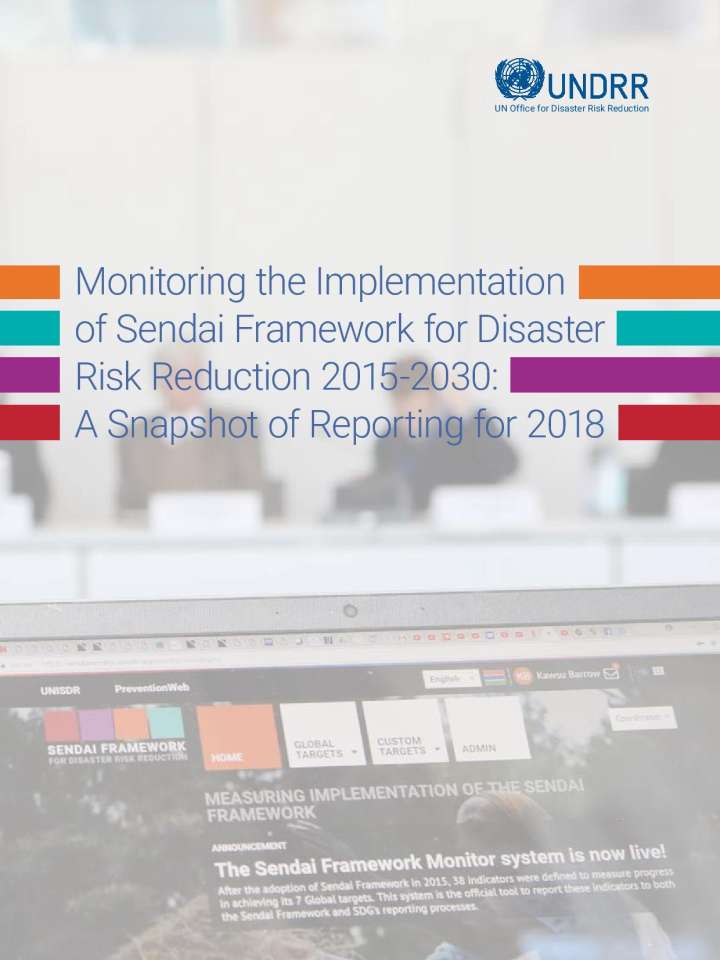Monitoring the Implementation of Sendai Framework for Disaster Risk Reduction 2015-2030: a snapshot of reporting for 2018
This report outlines how Member States are monitoring their implementation of the Sendai Framework. It is the first snapshot of the Sendai Framework monitor (SFM) taken after about 18 months since its launch in March 2018. It is for the first time that an analysis is being published of the data that Member States have shared as part of the official global indicator system of the Sendai Framework comprising the seven targets and 38 indicators.
The actual reporting year covered by the report is 2018 along with some comparison with the commensurate information for 2017, as and where possible. The report includes two main types of information. One, about what has been the trend in reporting and validation of the information in SFM. It gives an overview about how many countries are reporting on one or more of the targets and indictors and which indicators are popular among Member States from the point of view of receiving the maximum data. Credit goes to the Member States for being able to initiate this formal process of compiling data on disaster – related statistics, which is still at a nascent stage of development.
This report is a snapshot of what countries are saying at a point in time. It gives a global and regional perspective of disaster related losses in terms of human lives; persons with health effects, with damaged and destroyed housing, and with disrupted livelihoods. It provides a scale of the damage and destruction of critical infrastructure and disruption of basic public services that the world has seen in the reporting period. One of the key stories the report conveys is how countries assess their national DRR strategies on the basis of a set of common criteria. In terms of international cooperation on implementing this Framework by developing countries, the report consolidates what donor and recipient countries have said in terms of the support that they have provided or received respectively not just in financial terms but also through programmes and initiatives on DRR centric capacity building and technology transfer. Lastly, countries are also assessing their multi-hazards early-warning systems and risk information mechanisms and reporting in the SFM system within a common scoring format.
